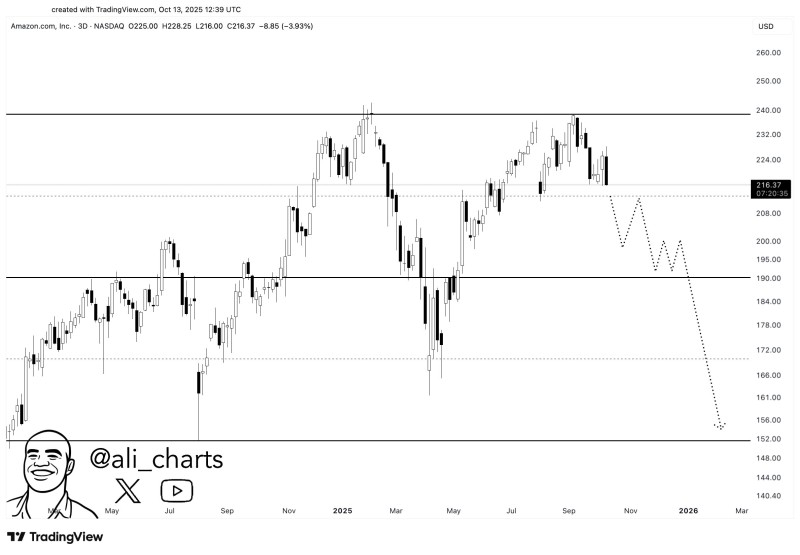Amazon (AMZN) is facing renewed selling pressure after failing to break through the upper boundary of its trading channel. The stock dropped 3.93% to close at $216.37, with technical indicators suggesting the potential for further weakness.
Key Technical Levels
The chart shows a textbook rejection at the channel top near $240, followed by a series of lower highs and lower lows - classic bearish price action. Market analyst Ali recently pointed out this rejection pattern, noting that if current support levels fail to hold, the stock could decline toward $152.

Here are the key levels traders are monitoring:
- Resistance Zone: $232–$240 has consistently capped upward momentum
- Immediate Support: Around $208, where buyers may attempt to stabilize
- Critical Level: $190, a psychological barrier where many traders have positioned their stop-losses
- Bearish Target: A breakdown below $190 could accelerate selling pressure, opening the door to a move toward $152 as the next major support target
What's Driving the Weakness?
Amazon's recent struggles aren't happening in a vacuum. The stock's valuation remains elevated compared to industry peers, making it vulnerable in a high-interest-rate environment. Consumer spending has been sluggish, with persistent inflation eating into retail growth - a core part of Amazon's business. Meanwhile, competition in the cloud space is heating up as Microsoft Azure and Google Cloud chip away at AWS's dominance. On top of that, broader market sentiment has turned risk-off, with investors rotating out of big-cap tech names and adding to volatility across the sector.
What This Means for Traders and Investors
For short-term traders, the setup looks increasingly bearish. If Amazon can't hold above the $208–$190 zone, the path of least resistance points lower. That said, long-term investors might see this as a chance to accumulate shares at more attractive prices, especially if the stock pulls back significantly. Either way, expect choppy trading and heightened volatility in the near term as the market tests these critical support levels.
 Peter Smith
Peter Smith

 Peter Smith
Peter Smith


